The best underwater housings for cameras and phones
Want to shoot under the sea? We count off the best underwater housings for cameras and phones right now
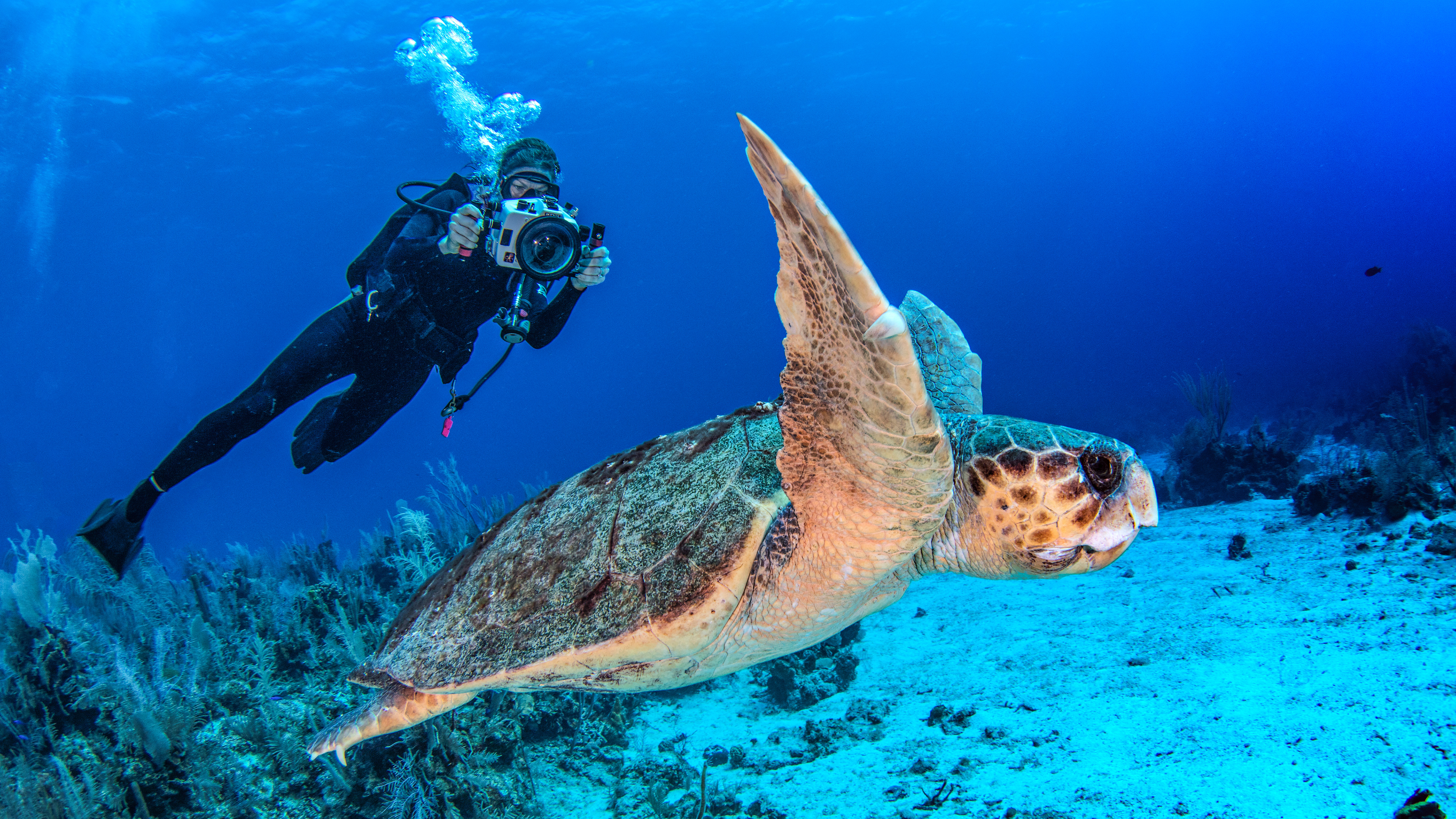
- The quick list
- Underwater smartphone cases
- Best phone case
- Best deep-dive phone case
- Best cheap phone case
- Shallow camera housings
- Best for mirrorless
- Best for DSLRs
- Best budget
- Best for GoPros
- Best for older GoPros
- Deep camera housings
- Best deep housing for DSLR
- Best for professionals
- How to choose
- How we test
The best underwater housings for cameras and smartphones allow you to take your passion for image-making underwater. Whether you want to go snorkelling or scuba-diving, and whether you're using an iPhone or the latest professional mirrorless camera, a good housing will give you the tools you need to create spectacular sub-aquatic images.
While it’s true that there are many great waterproof cameras out there, many of which can sink to impressive depths, waterproof cases and housings still have an edge for a number of reasons. Waterproof compacts are not terribly sophisticated as far as camera tech goes; they tend to have smaller sensors than the best mirrorless cameras and the best DSLRs, and lack advanced imaging features such as high frame rates, sophisticated autofocus systems and high-quality 4K video.
What's more, if you do all your snapping on one of the best smartphones for photography, or one of the best GoPros, it makes sense to pick up a cheaper housing for your device, as this will likely set you back less than a dedicated tough camera. So, we've split this guide up to cover housings for smartphones, action cameras, mirrorless cameras and DSLRs, with options for shallow and deep diving.
So, let’s (ahem) dive right in!

Jon is one of our go-to specialists when it comes to all aspects of photography, from cameras and action cameras to lenses and memory cards, flash diffusers and triggers, batteries and memory cards, selfie sticks and gimbals, and much more besides.
The quick list
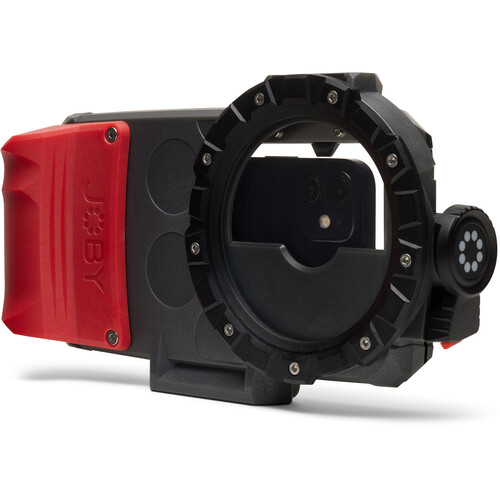
Best smartphone case
Made in conjunction with Aquatech, Joby's sophisticated underwater housing for iPhones and Samsung smartphones is a brilliant tool for shallow dives.
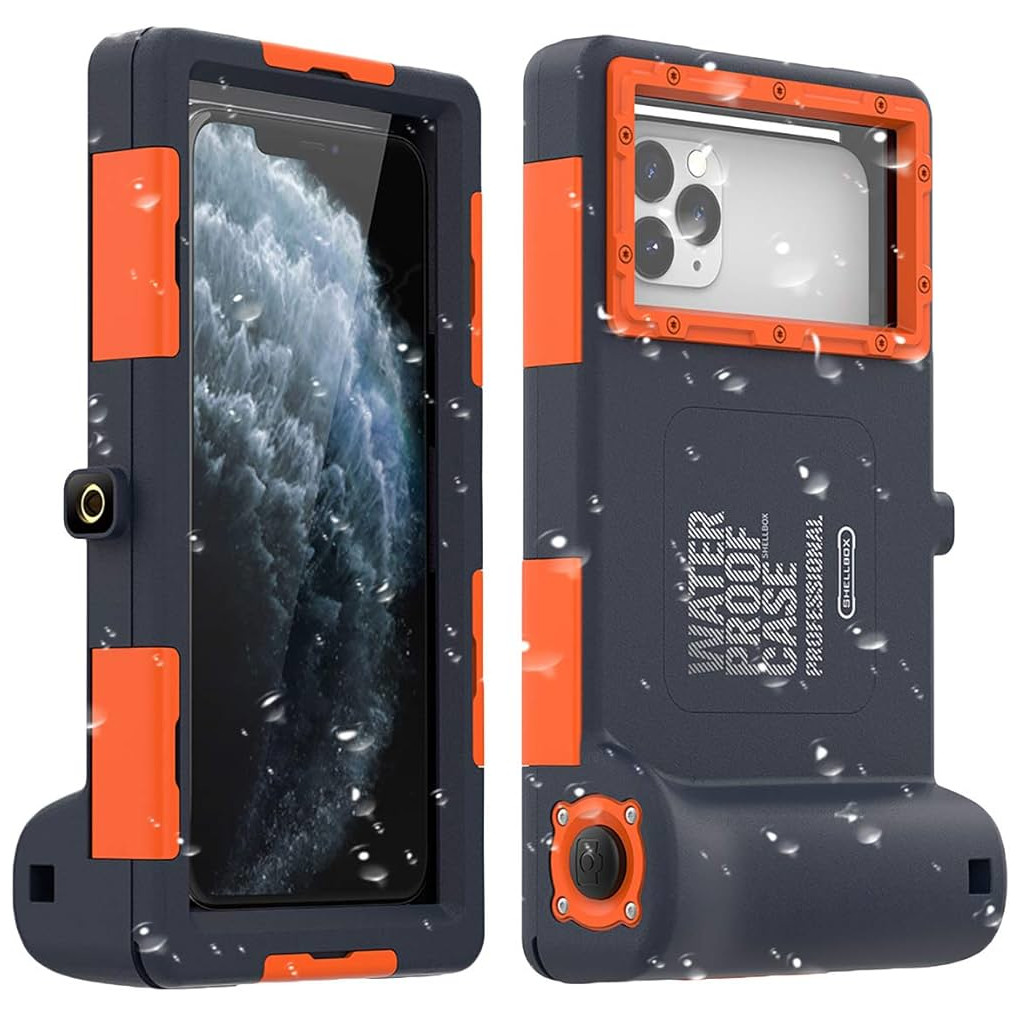
Best for deeper dives
This phone case is secure to depths of 15m, outstripping the SeaPal's 10m maximum rating, making it a good choice for adventurous smartphone snappers.
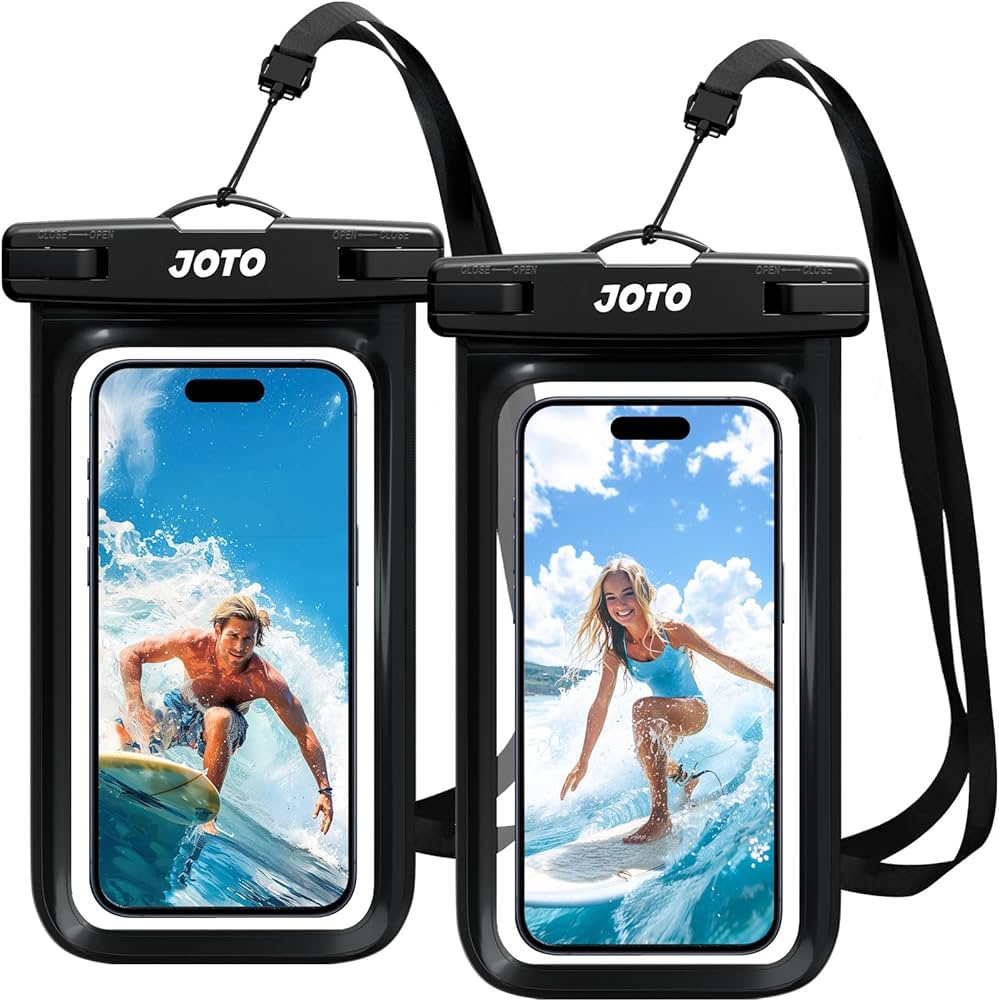
Best cheap smartphone case
It ain't fancy, but this broadly compatible smartphone pouch is cheap and effective for shallow-water shooting – as long as you don't mind limited settings control.
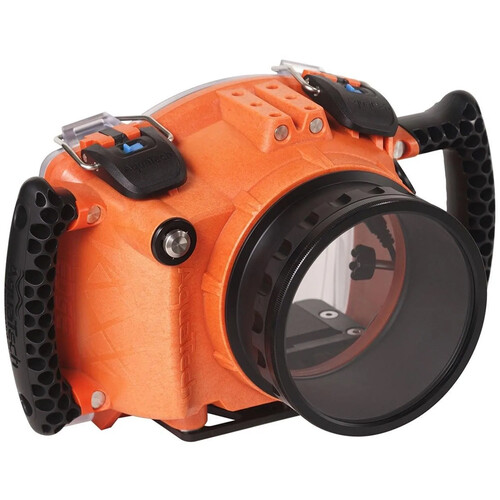
Best mirrorless housing
Available for a huge range of mirrorless, compact, medium format and cine cameras, Aquatech's EDGE housings allow for shooting down to 10m depths.
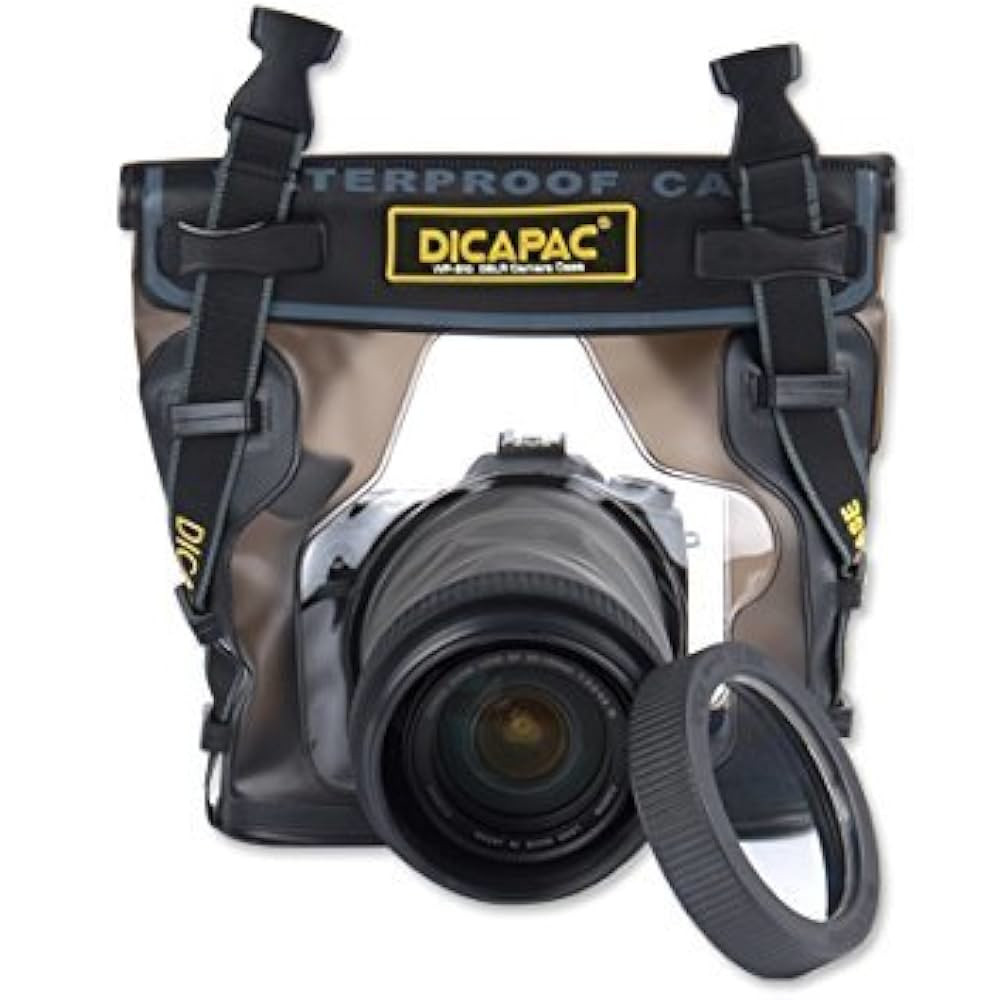
Best DSLR housing
Suited to a wide range of DSLRs, this underwater housing from Dicapac is also affordably priced, especially in comparison to the professional-level housings.
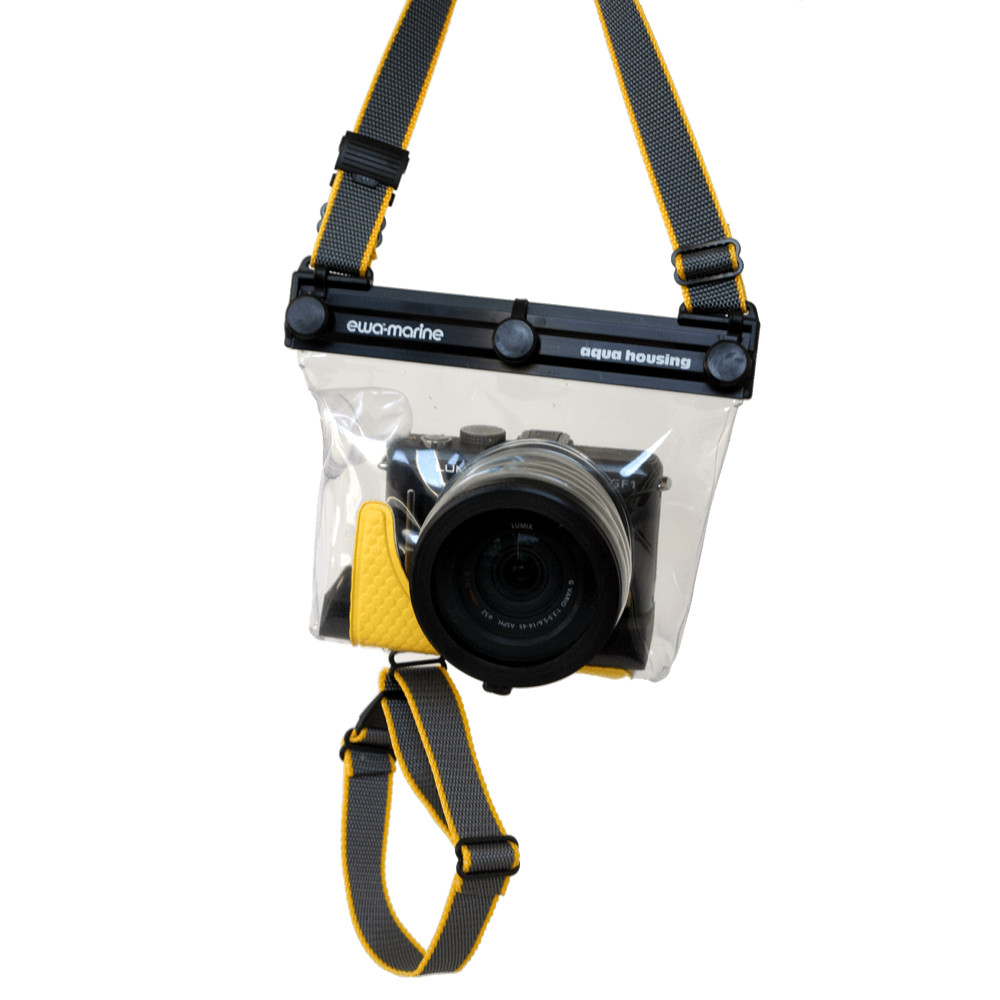
Best budget housing
For a budget-friendly option for smaller mirrorless systems, the Ewa-Marine EM D-B Bag is a good bet, with a glove-like finger orifice allowing access to camera controls.
Load the next products ↴
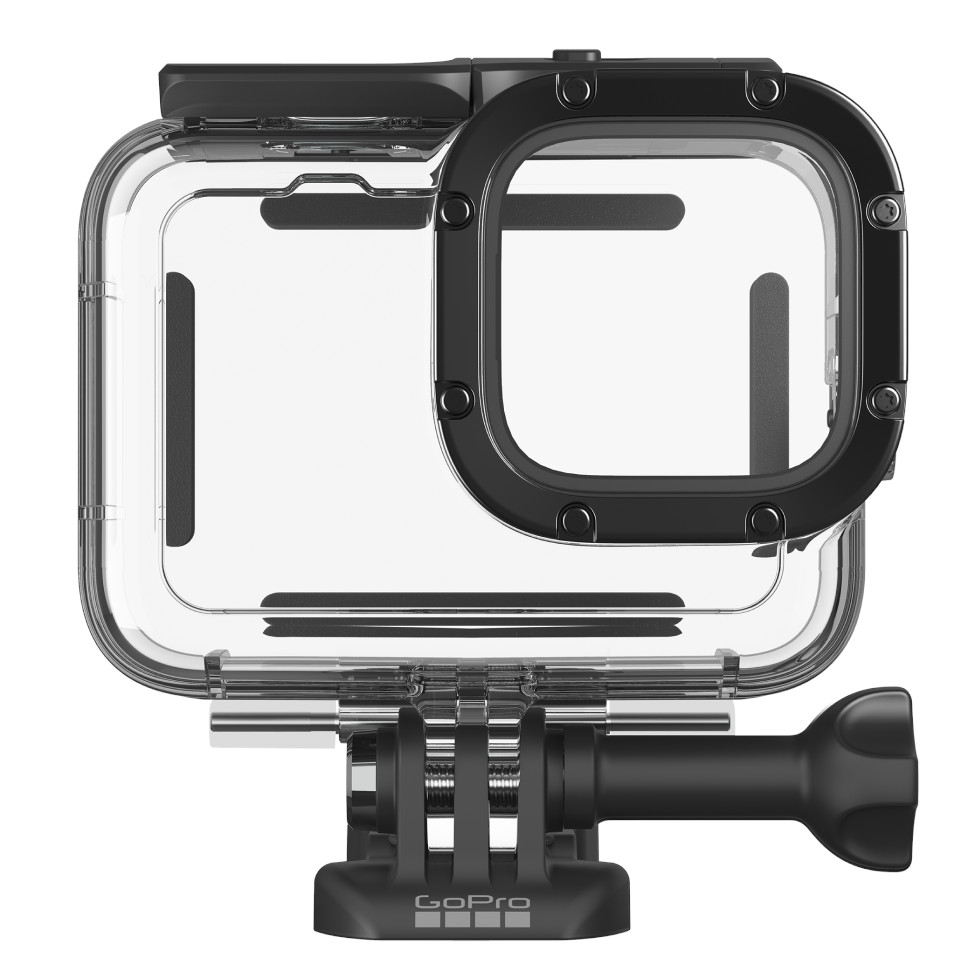
Best GoPro housing
Extend the diving depth of your GoPro Hero camera with this protective housing, which is capable enough to support deep-diving to a whopping 60m.
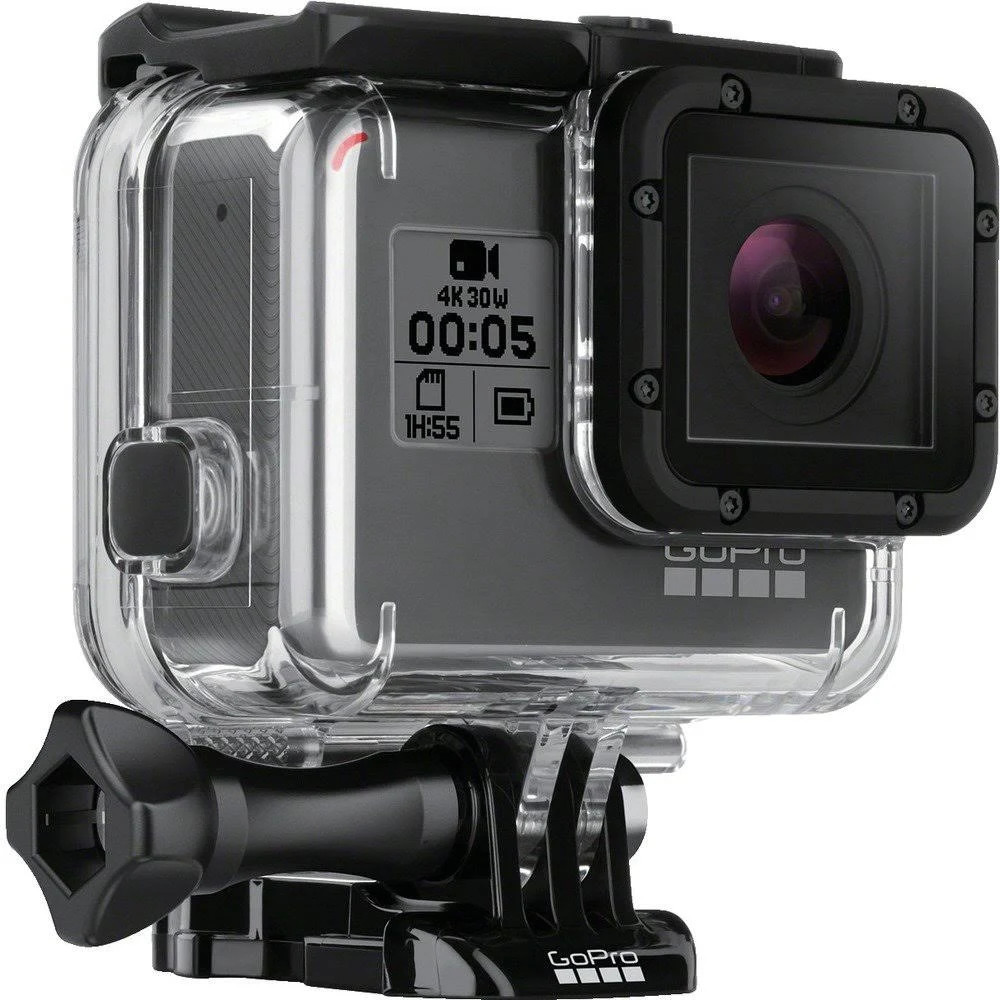
Best for older GoPros
If you're using an older model of GoPro, the Super Suit is your best bet to increase your dive depth. It is getting hard to find though, so you may need to shop second-hand.
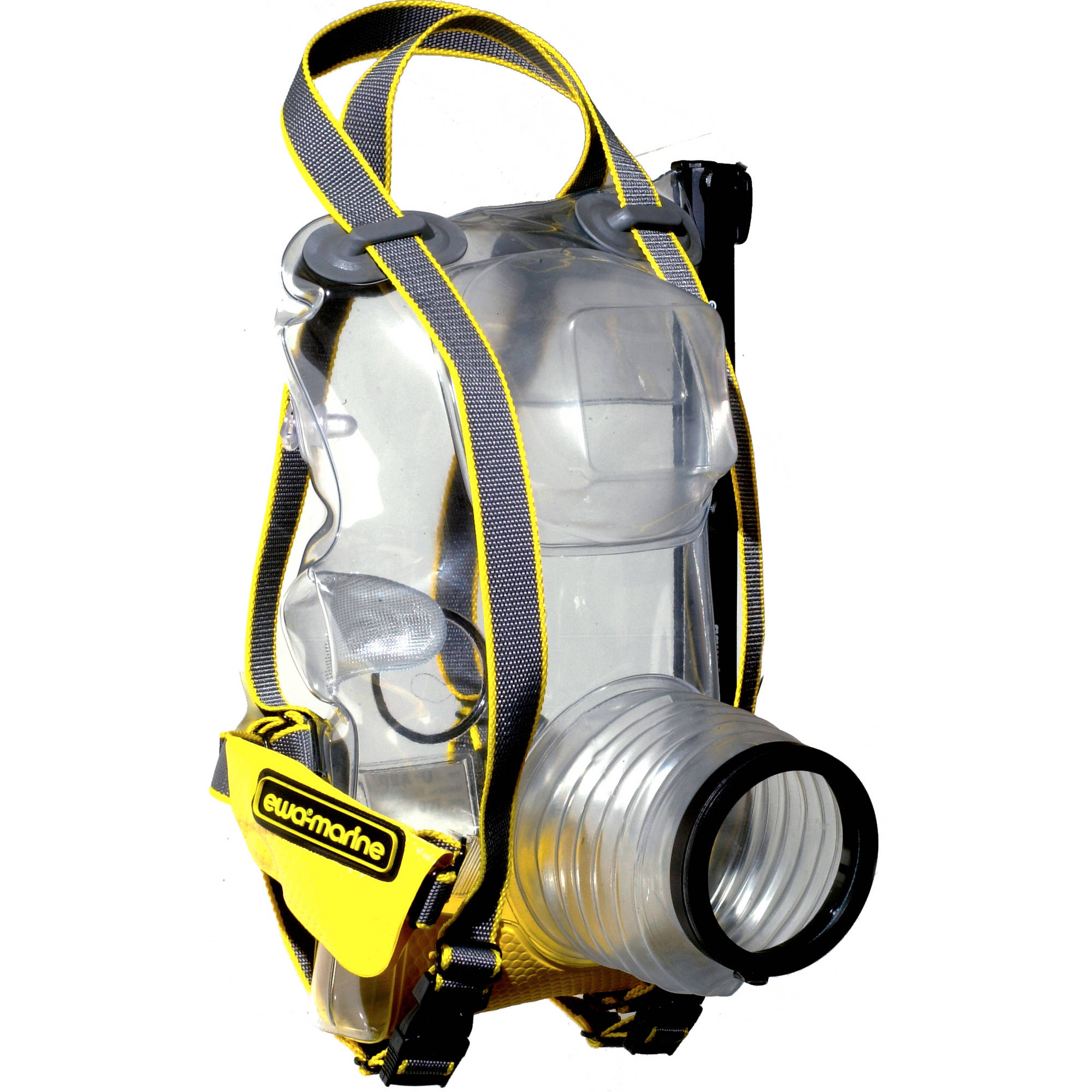
Best deep-water DSLR housing
For those using larger pro or enthusiast DSLRs, the Ewa-marine U-AXP offers accessible controls and high-grade mineral glass for clean images.
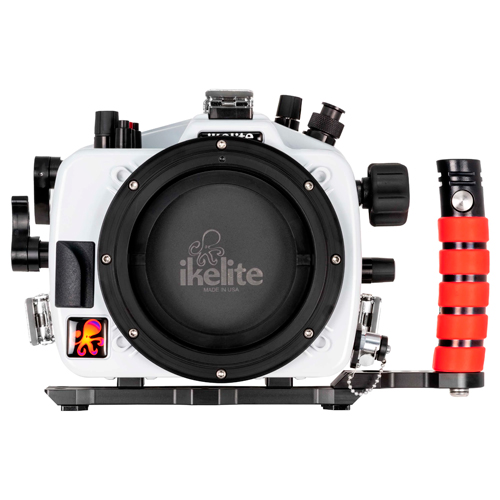
Best professional underwater housing
Available for a broad range of professional mirrorless and DSLR cameras, Ikelite's range is not cheap, but is more or less the last word in pro underwater photography.
The best underwater camera housings
Why you can trust Digital Camera World
Best underwater case for phones
Protective underwater cases for phones can vary from simple pouches to more robust cases that are tailored to individual models. When picking a good underwater case for a phone, make sure it will also allow you full operation of the touchscreen, so that you’ll be able to shoot to your full ability without compromising the waterproofing.
Best underwater smartphone case
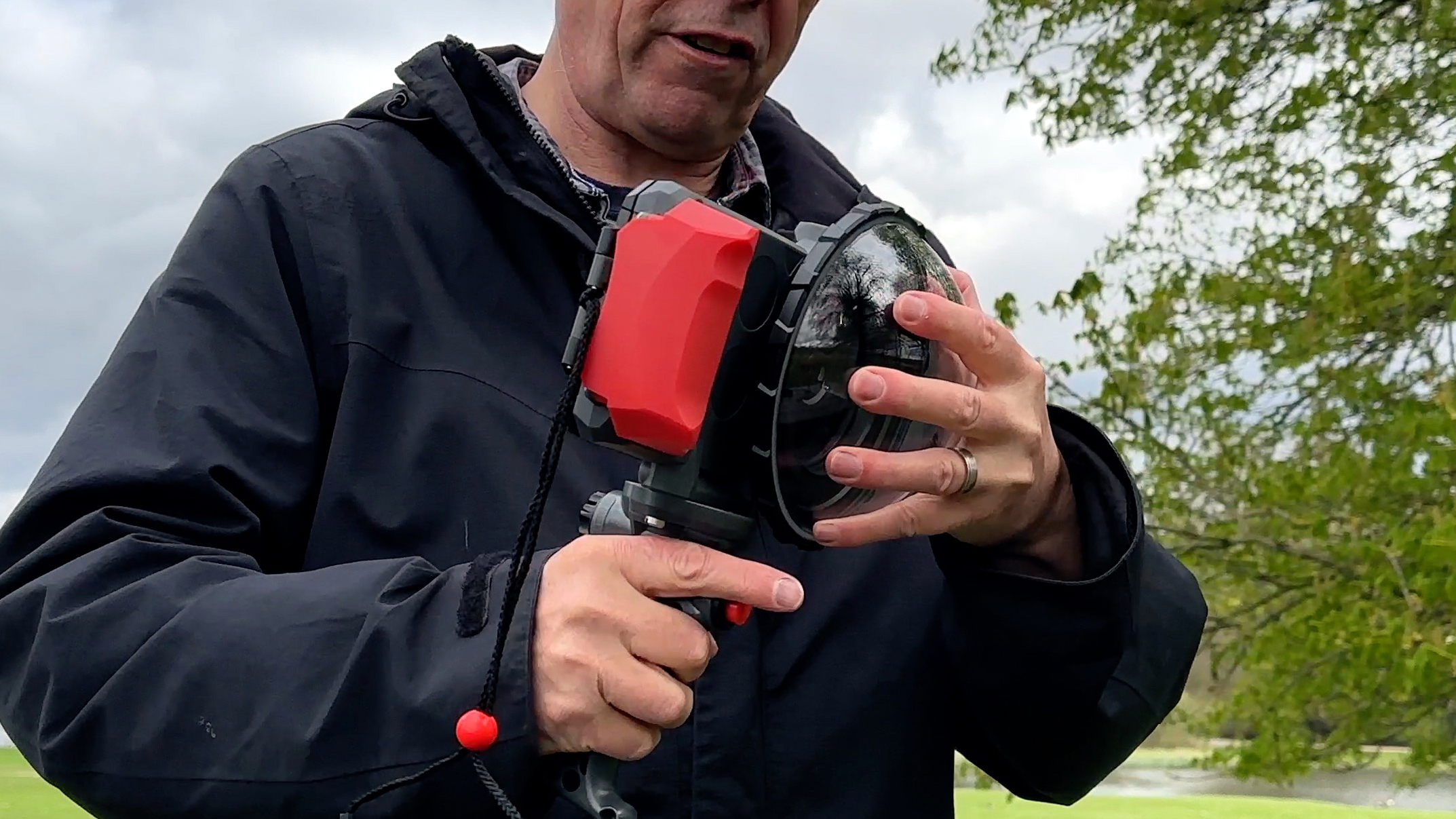
Specifications
Reasons to buy
Reasons to avoid
Technically your iPhone 15 is able to film while submerged at a depth of up to 18 meters for 30 minutes, which makes it water resistant (but not waterproof due to the time limit). However, would you really want to risk your expensive iPhone on a deep dive? The JOBY SeaPal enables your iPhone to go where no other grips can take it - underwater! While other iPhone users may be limited to capturing shore-based activities on a beach holiday the SeaPal’s waterproof casing enables you to use your iPhone to shoot shoals of fish on a snorkeling trip (up to a depth of 10 meters/33 feet.) Another bonus of keeping your iPhone sealed in SeaPal’s case is that it will be protected from being smeared in suntan lotion or being ingressed by sand particles.
The JOBY SeaPal Waterproof Case takes a little time to set up for the first time (say 15 minutes), but then you’re good to go. It ships with a collection of rubber mounts that you need to clip into the body of the case to fit your particular iPhone or smartphone model. A downloadable manual gives you a clear diagram of which rubber mounts to insert and where to place them. After an initial waterproofing test you can pop your iPhone into the case and rotate a large plastic button to seal it in. Make sure that the knob makes a satisfying click to endure that the case is fully sealed.
The front of the case has a large glass port for your iPhone’s three lenses to shoot through. This glass is superior to cheaper third-party plastic cases that may be more prone to fogging up. The SeaPal case’s glass is also scratch-resistant so your shots and clips should look pristine. On the rear of the case is a plastic membrane. This is thin enough for you to interact with your iPhone’s screen while filming underwater, so you can swipe in the Camera app to change shooting modes or trigger a recording.
Like other grips, the SeaPal Waterproof Case has a hand (or glove) friendly grip so that you can hold onto it securely. For an even firmer hold, it's worth purchasing the JOBY Bluetooth Shutter Grip. This extra accessory also enables you to snap a shot or capture a clip with the press of a physical button, so you don’t need to fumble with the touchscreen.
Read our full JOBY SeaPal review for more
Best smartphone case for deeper dives
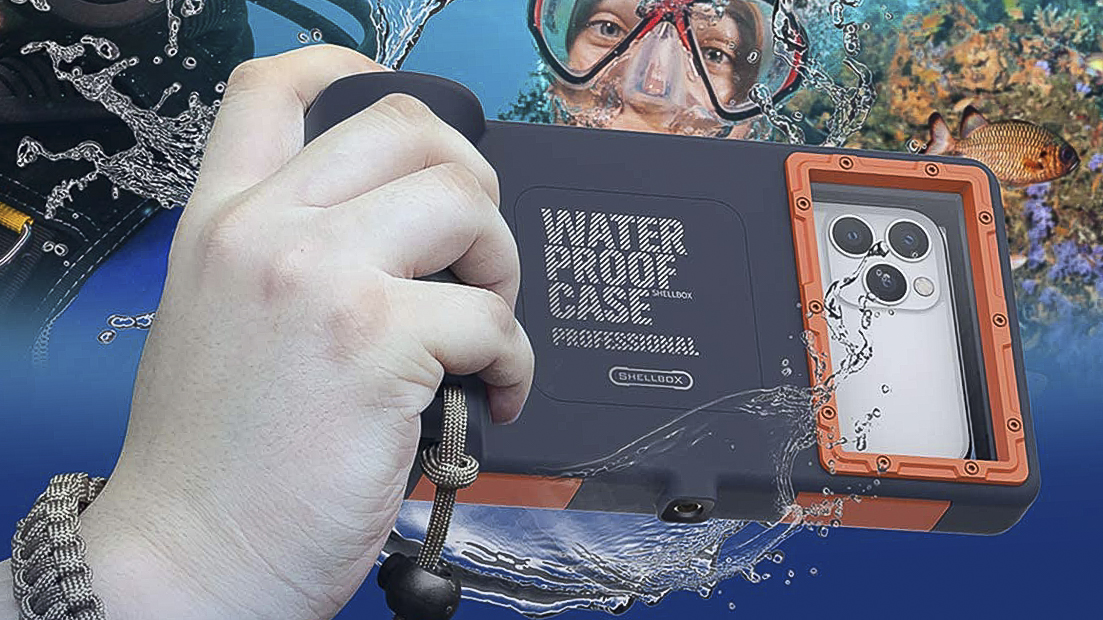
2. AICase Water Proof Case Professional
Specifications
Reasons to buy
Reasons to avoid
For serious diving, then this polycarbonate case is just the ticket. It claims to fit most popular iPhones and Galaxy handsets - so you may still be able to use it when you upgrade your camera phone (and you can also share it with friends). The 15m depth rating makes it suitable for sub-aqua use - but will also appeal to those into sailing and other water sports. You do need to set up the phone before you put in the housing, as the only control you get is the shutter button. As ever with any housing, you do need to follow the instructions for checking the seal every time you use it.
Best cheap smartphone underwater case
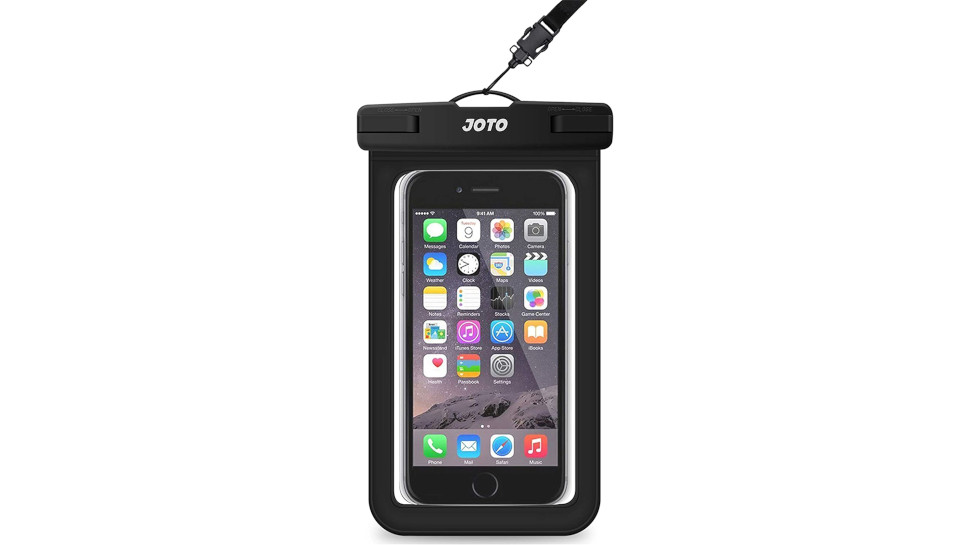
3. JOTO Universal Waterproof Phone Pouch
Specifications
Reasons to buy
Reasons to avoid
While many of the housings on this list can be quite pricey, if you’re after a real bargain then we’d recommend this pouch from JOTO. Styled as universal, it’s a straightforward product that will work with pretty much any smartphone that physically fits inside it. Once you’ve sealed the clamps (and it pays to double-check, here) then your phone will be protected down to about 30m of water, and you’ll be able to take pictures through the clear window on both the front and rear sides. Some users report some difficulty using the touchscreen so it may take a few tries, but if you’re after a bargain underwater case, this is unbeatable.
Best shallow-water cases for cameras
Here we’ve picked out some of the best dedicated cases for DSLRs and mirrorless cameras that work in shallower waters. These aren’t the choice for deep-sea diving, but for snorkelling and shallow-water shooting with your camera, they’ll work perfectly. Bear in mind also that there are lots of different models for different types of camera, and space doesn’t permit us to cover them all, but Aquatech, Dicapac and Ewa-marine – the makes we’ve chosen for this section – produce many different housings, so it’s worth heading to the website to see if the manufacturer offers a housing compatible with your camera.
We've also picked out some options for GoPro cameras. While GoPros and other action cameras will be waterproof up to a point, dedicated housings allow you to take them much deeper than you would otherwise, making them a good choice for snorkelling and shallow diving alike.
Best underwater camera housing for mirrorless
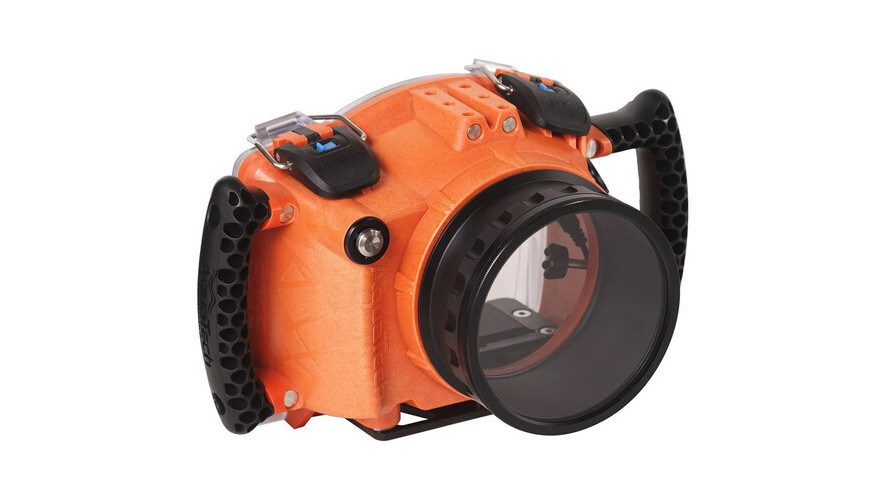
4. Aquatech EDGE
Specifications
Reasons to buy
Reasons to avoid
The EDGE range of housings from Aquatech – the manufacturer who collaborated with Joby for the SeaPal case featured above – is available for a broad range of mirrorless and compact cameras from Canon, Nikon, Sony, Fujifilm and Leica. There are also options for select Fujifilm GFX medium-format cameras, and two cameras from Sony's FX cinema range (the FX3 and FX30).
The range is split into 'Pro' and 'Base', the main difference being that the Pro housings are designed for specific model of cameras, and offer push-button controls on the rear for underwater settings changes. The 'Base' housings are more affordable, but don't offer button controls, meaning you have to decide on your camera settings before you get into the water.
Able to safely descend to depths of 10m, the EDGE housings are great for snorkelling and shallow diving. They're durably built, and can be customised with additional accessories such as a right-side handle for a secure grip.
Best DSLR underwater housing
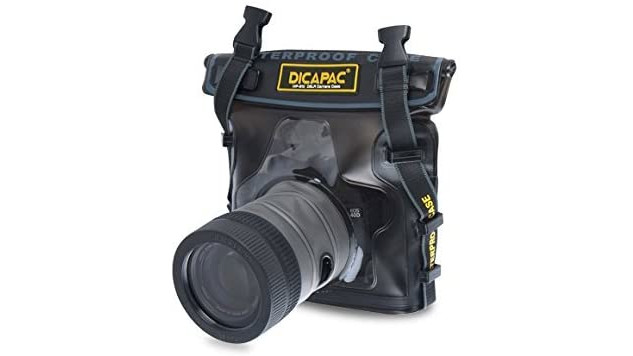
5. Dicapac WP-S10
Specifications
Reasons to buy
Reasons to avoid
Dicapac makes a whole host of straightforward underwater bag-style housings for DSLRs and mirrorless cameras, and they’re significantly more affordable than comparable pro housings would be. This one even has enough space for zoom lenses like a 24-105mm to be used (though this extra space does make it fiddly if you want to use a shorter lens), and is compatible with enthusiast DSLRs like the Canon EOS 7D Mark II. While it has strategically placed holes to allow the user to operate the DSLR’s controls, some users have experienced trapped air in the bag making it hard to operate. Still, once you get used to its quirks, this is an impressive piece of kit.
Best budget underwater camera housing
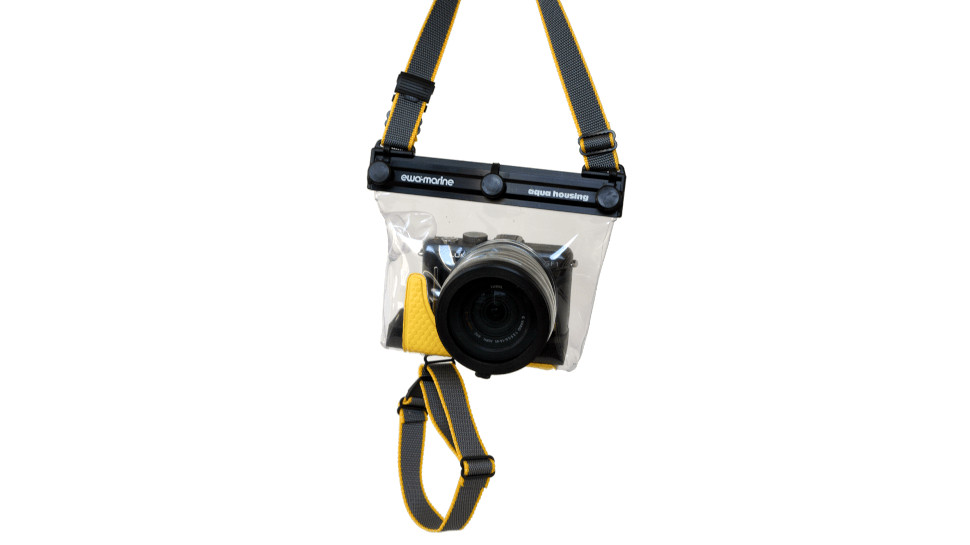
6. Ewa-Marine EM D-B Bag
Specifications
Reasons to buy
Reasons to avoid
If you’re using a smaller mirrorless setup, it’s worth seeking out a dedicated mirrorless housing, as this will make operation of the camera much easier once you’re underwater. The D-B from Ewa-marine, for instance, features a glove-like finger orifice that allows easy access to the controls of a mirrorless camera, making it that much easier to nail the shot even underwater. Autofocus and flash should still work well enough to be useable, and the bag is specifically designed so that the camera won’t be affected by the increased pressure of the water – this is why you want to make sure there is a little air inside the bag, as opposed to other similar housings where you generally want to expunge it.
Best underwater housing for GoPros
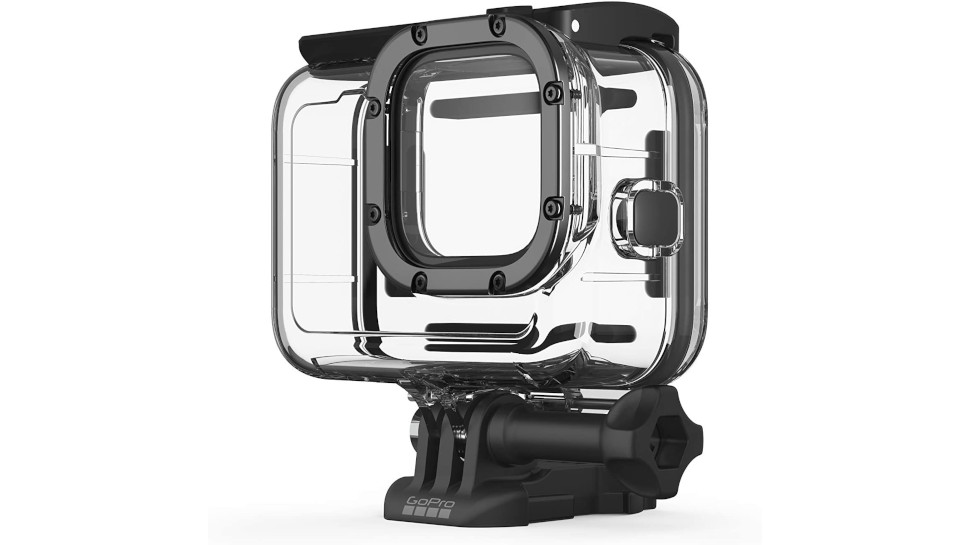
7. GoPro Protective Housing
Specifications
Reasons to buy
Reasons to avoid
Extend the waterproofing of the flagship GoPro Hero12 Black from 10m to a whopping 60m with this dedicated housing. It also includes a “skeleton backdoor” which provides access to the touchscreen and improves audio capture, and according to GoPro, a camera with this housing equipped will still produce reliably sharp images above and below water. This is also compatible with the GoPro Hero 9, 10 and 11 Black.
Best underwater housing for older GoPros
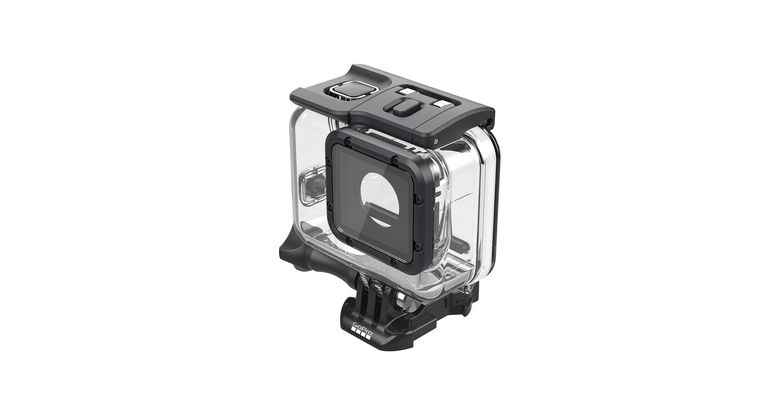
8. GoPro Super Suit
Specifications
Reasons to buy
Reasons to avoid
If you plan on diving and are using a Hero 7 Black or older, your best bet is GoPro’s own Super Suit. Its included Waterproof Backdoors allow for diving down to up to 60m (196ft), and it has a flat glass lens to deliver maximum sharpness. The case also serves as protection against dust and flying debris. The Waterproof Doors can be swapped out for Skeleton Doors to allow for use of the touchscreen, though this will make the case no longer waterproof.
No longer sold by GoPro, the Super Suit is still available second-hand on eBay and other selling sites – though of course, you won't get any manufacturers' guarantees when buying from a private seller. Use at your own risk.
Best pro cases for deep diving
Finally, we come to the housings designed to take pro-spec cameras into deeper waters. These are serious housings for serious cameras, and as such they command serious prices. But if you’re looking for the best and can accept no substitute, these are definitely the housings to pick, with full access to camera controls and a sophisticated build that ensures images and videos are beautifully sharp.
Best deep-water housing for DSLRs
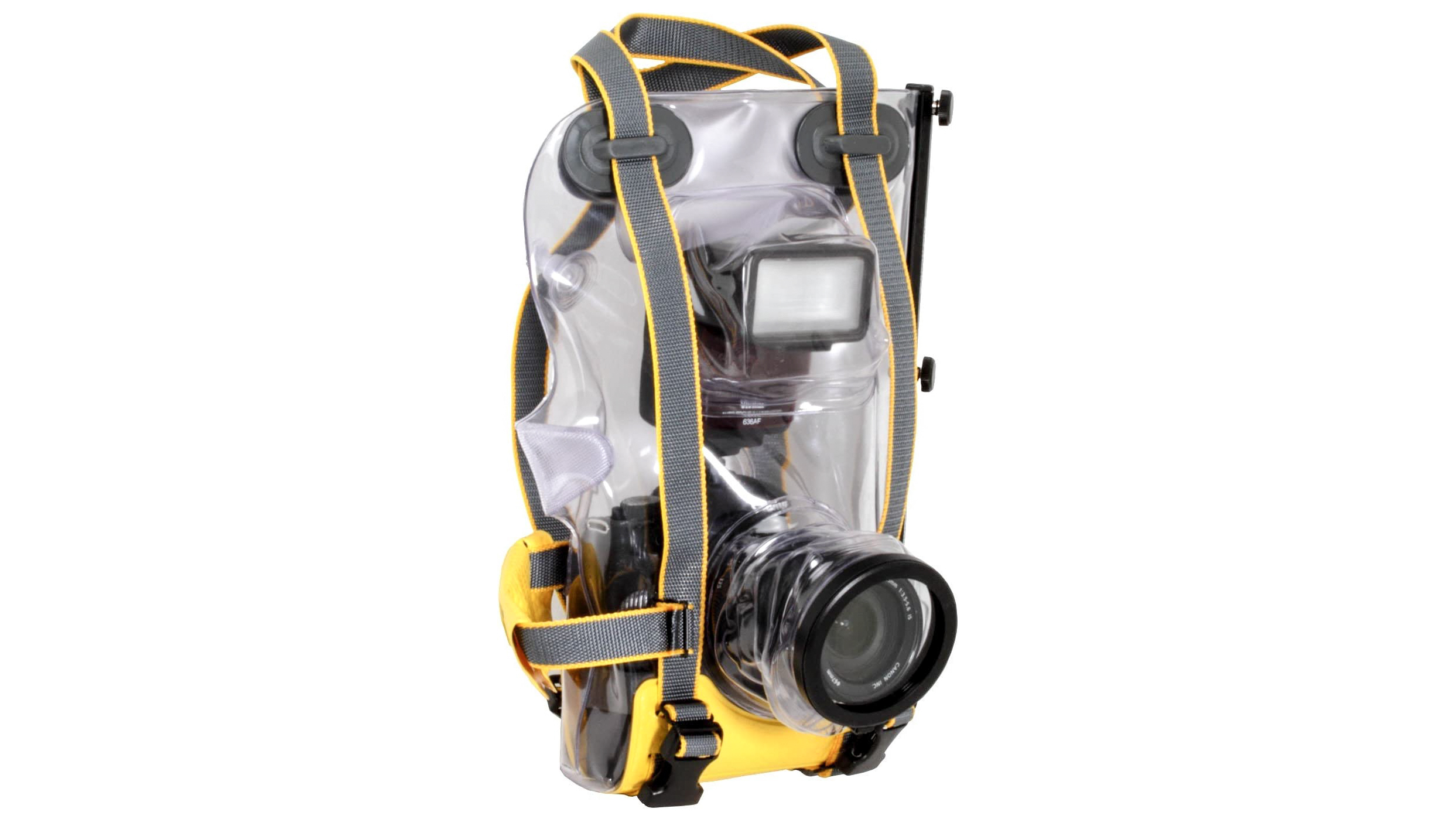
9. Ewa-marine U-AXP
Specifications
Reasons to buy
Reasons to avoid
Another housing from Ewa-marine, the U-AXP is designed specifically for pro-spec DSLRs like the Canon EOS-1D X Mark III or the Nikon D6, and will carry them safely down to depths of 50m. If you want to dive more easily, it’s also possible to attach an optional BF1 lead weight, which any diver will tell you can make the descent much smoother. Controls are easily accessible, and the lens window is made from high-grade mineral glass to ensure top-notch quality. It’s designed for use with relatively short lenses with a filter diameter of less than 72mm – if you use larger lenses than this, it’s worth considering the Ewa-marine U-AXP100 (see at Amazon).
Best professional underwater camera housing
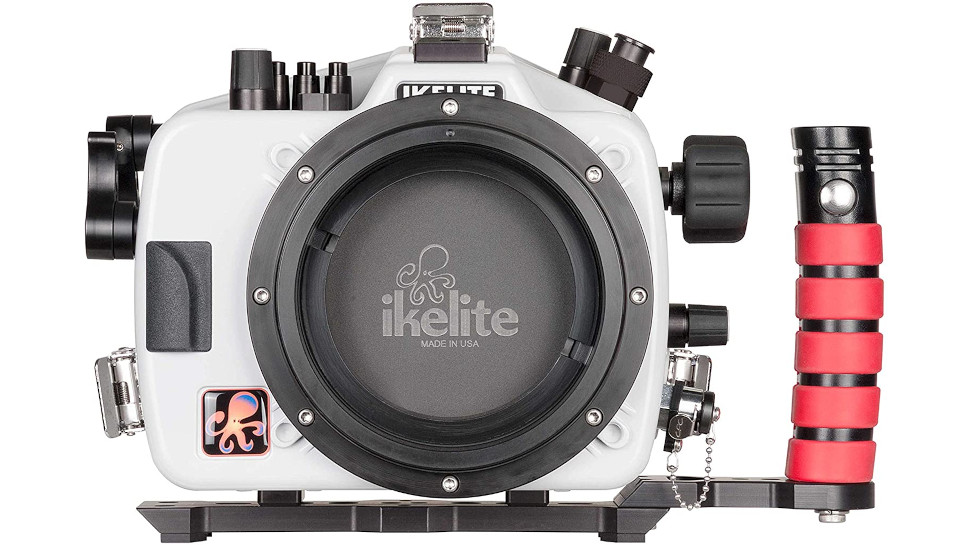
10. Ikelite 200DL
Specifications
Reasons to buy
Reasons to avoid
Ikelite’s housings are probably the best deep-water camera protection out there right now. The 200DL can be purchased for the Canon EOS 5D series, the OM System OM-1 II, the Fujifilm X-T5 or practically any number of other mirrorless and DSLR cameras you’d care to name, past and present. Its Dry Lock Port system provides superlative security underwater (though does require the additional purchase of the Lens Port), and the unique zoom gear system of the housing makes it easy to use zoom lenses. There’s even the option to use the included Ikelite ICS-5 bulkhead connector with manual hotshoe for triggering underwater strobes, providing a new dimension to your underwater shooting. These are the best housings around.
How to choose an underwater camera housing
When you're choosing an underwater housing for your smartphone or camera, the first issue you're going to run into is going to be compatibility – simply put, does your camera fit in the housing? As you can see on this list, some housings are designed to work fairly generically with a few different models of phone or camera, while others are built around one specific model, and will not be suitable for use with any others.
This will likely also affect another key factor to consider when choosing housings – how much camera control they offer. A housing that is designed to fit just one type of camera can be made with that camera's control scheme in mind, and can thereby allow you to operate the buttons while diving. This can be hugely useful if you want to vary your settings; with more generic (or cheaper) housings that don't offer this depth of control, you'll have to put more faith in the camera's auto modes.
Some housings also offer accessory ports, allowing you to attach handles for a secure grip, or space for additional accessories like a flashgun. The latter can be especially useful for underwater photography, where light is in short supply – though you may need to buy additional parts to ensure it works (Ikelite, for instance, sells hotshoe TTL converters to allow for the use of strobes with its housings).
How we test underwater camera housings
We test all photo and video accessories by using them as the manufacturer intends – so for underwater housings, we set them up with a compatible camera and give them a dunking! Our review budgets don't always allow for a trip to a tropical ocean (unfortunately), so we take housings to more local waters to see how they perform when fully submerged. Where possible, we test housings to their rated depths, and we assess the quality of images we are able to capture in these circumstances. After all, there's no point taking your phone or camera underwater if the resultant images are too compromised to be of any use.
Get the Digital Camera World Newsletter
The best camera deals, reviews, product advice, and unmissable photography news, direct to your inbox!
Jon spent years at IPC Media writing features, news, reviews and other photography content for publications such as Amateur Photographer and What Digital Camera in both print and digital form. With his additional experience for outlets like Photomonitor, this makes Jon one of our go-to specialists when it comes to all aspects of photography, from cameras and action cameras to lenses and memory cards, flash diffusers and triggers, batteries and memory cards, selfie sticks and gimbals, and much more besides.
An NCTJ-qualified journalist, he has also contributed to Shortlist, The Skinny, ThreeWeeks Edinburgh, The Guardian, Trusted Reviews, CreativeBLOQ, and probably quite a few others I’ve forgotten.
